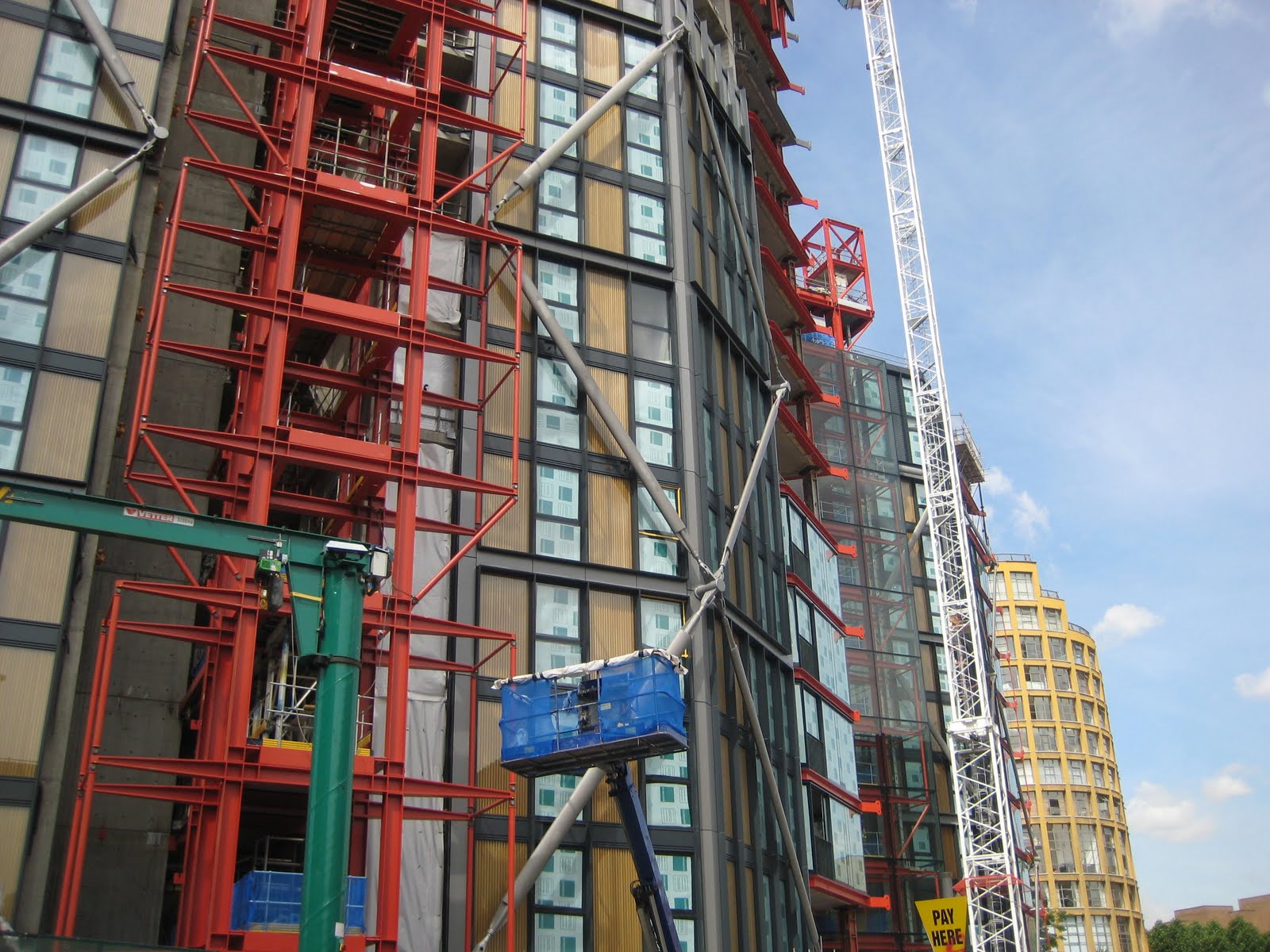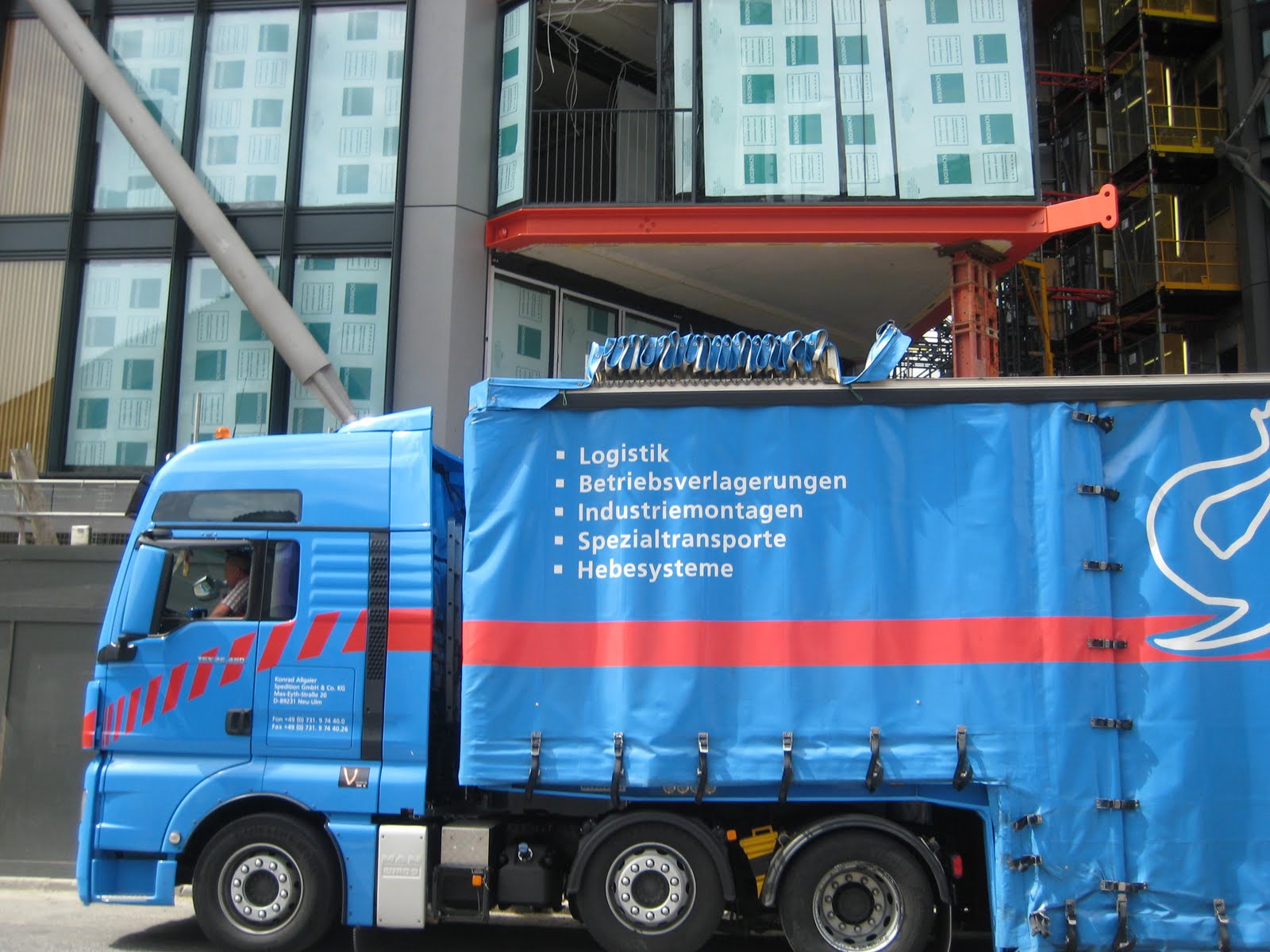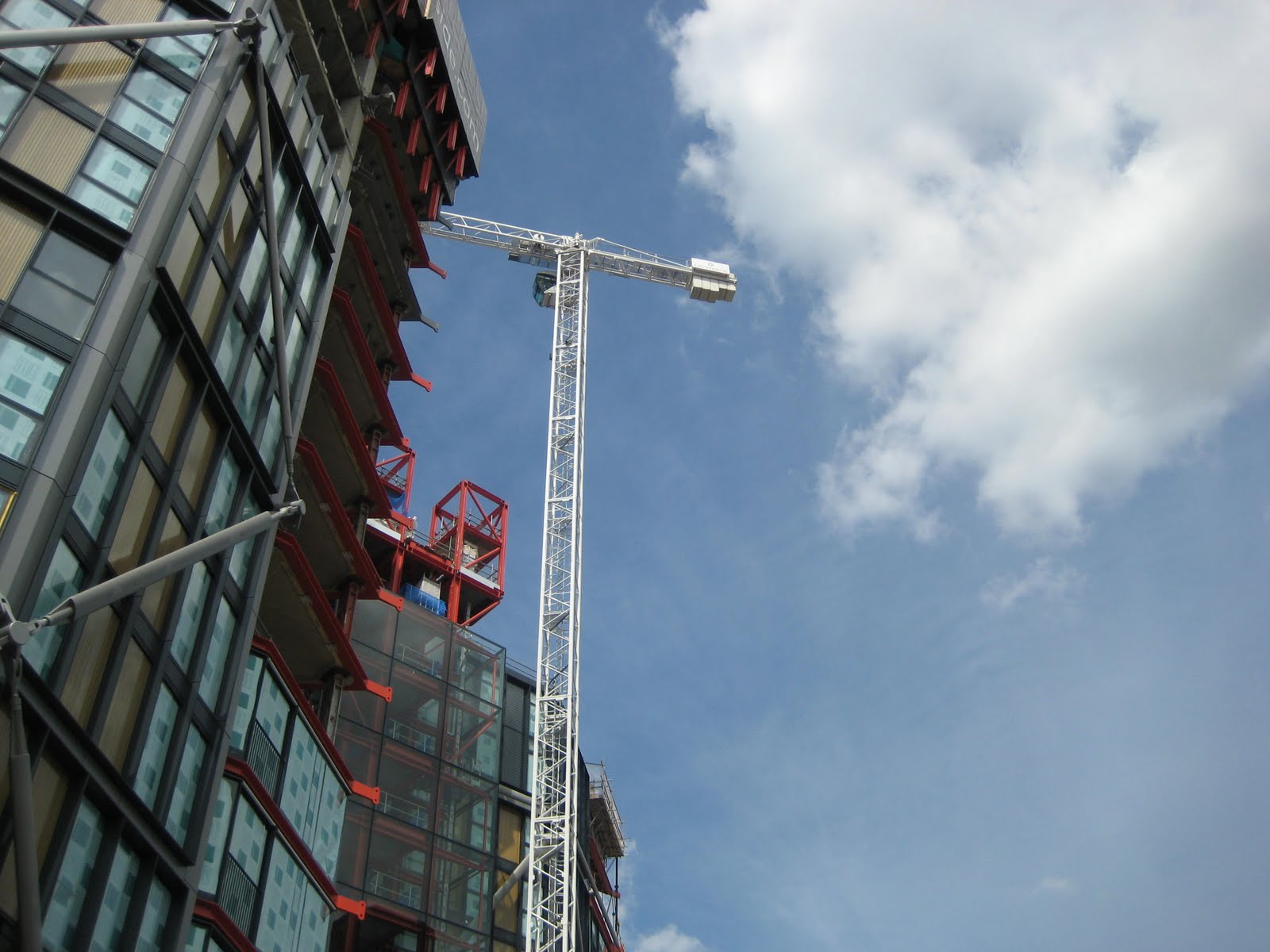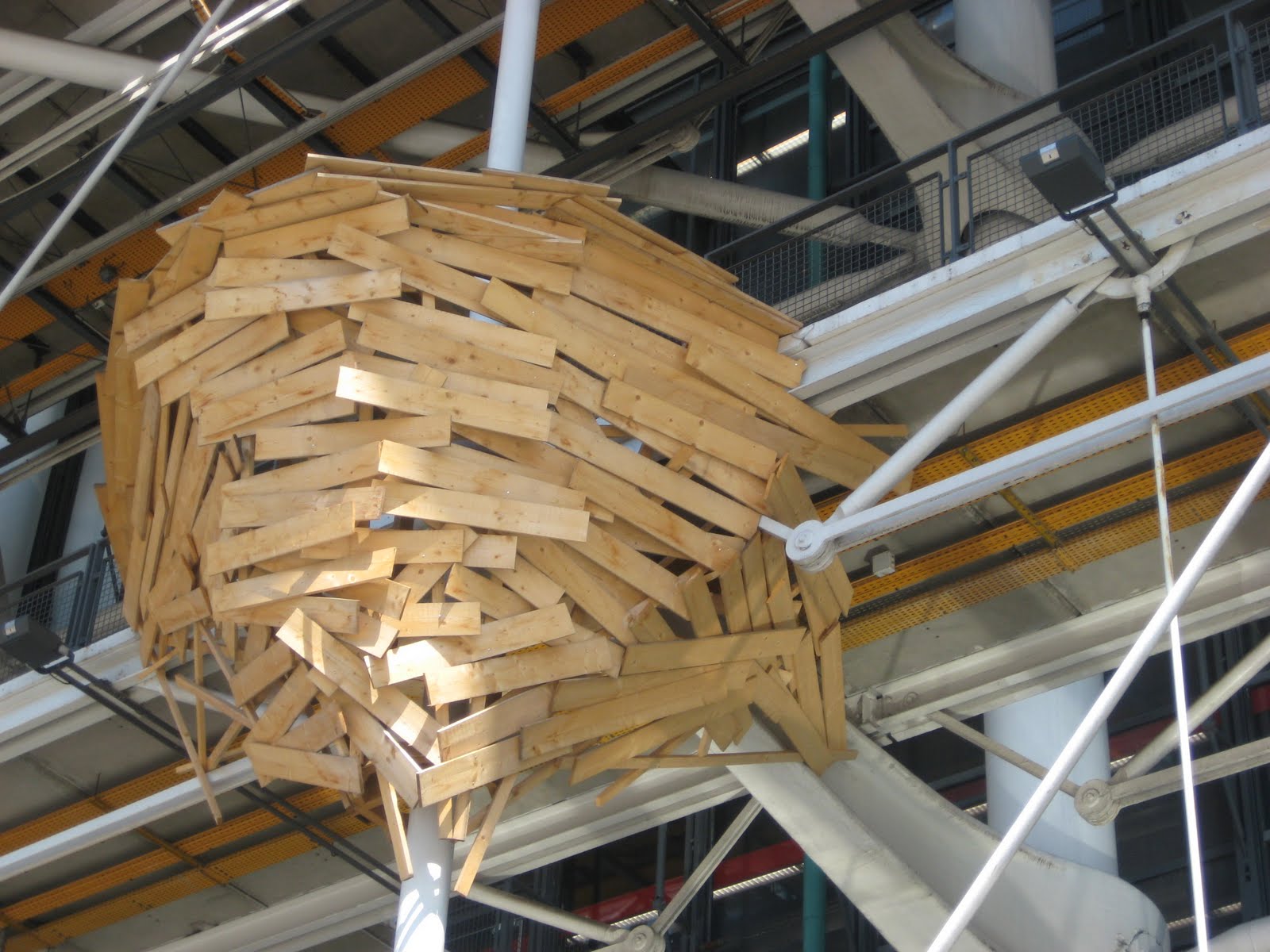 “Compare and contrast” essays are central to my arsenal of 1st-year assignments, a more developed version of the old “One of these things is not like the others” game regularly featured on Sesame Street. Marking differences and similarities between objects helps us process information, analyzing what we know and organizing it for future recall. And it delights us with the satisfactions of any puzzle.
“Compare and contrast” essays are central to my arsenal of 1st-year assignments, a more developed version of the old “One of these things is not like the others” game regularly featured on Sesame Street. Marking differences and similarities between objects helps us process information, analyzing what we know and organizing it for future recall. And it delights us with the satisfactions of any puzzle.

So many London construction sites struck me as brilliant, ready-made PopArt; this one just behind the Tate Modern readies the eye for that building’s Modern and Contemporary Art. As well, these sites reminded me of a building in another city, one whose buildings and ongoing construction are generally less exuberant (yes, I’m risking a generalization there, and not without recognizing numerous outstanding contemporary buildings.)
 Did you already know I was going to make a connection to the Pompidou Centre? Its primary colours, playful yet clean geometries, and external references to building structures and transportation tell another Tale of Two Cities, I’d say, making a link across the Channel that’s often obscured for me.
Did you already know I was going to make a connection to the Pompidou Centre? Its primary colours, playful yet clean geometries, and external references to building structures and transportation tell another Tale of Two Cities, I’d say, making a link across the Channel that’s often obscured for me.
 Dodging the hard hats and the dump trucks at the London construction site, head tilted, neck strained, I automatically thought of a Meccano set, just as I do at the Beaubourg.
Dodging the hard hats and the dump trucks at the London construction site, head tilted, neck strained, I automatically thought of a Meccano set, just as I do at the Beaubourg.
 And this wasp-nest like accrustation, part of a recent project by Tadashi Kawamati, only intensifies my awareness of the similarities and differences between the London construction and the Parisian art centre: it highlights in both their emphasis on, and exposure of, buildings and their structures; at the same time, the organicity of its material (salvaged wood) and the assemblage of that material sets off the mechanic, inert, even hard lines of our contemporary architecture.
And this wasp-nest like accrustation, part of a recent project by Tadashi Kawamati, only intensifies my awareness of the similarities and differences between the London construction and the Parisian art centre: it highlights in both their emphasis on, and exposure of, buildings and their structures; at the same time, the organicity of its material (salvaged wood) and the assemblage of that material sets off the mechanic, inert, even hard lines of our contemporary architecture.
Which, as you might have expected, set me off on another round of “comparison and contrast,” this time between rural Portuguese construction of a much earlier vintage.
 Compare this method of achieving height with the London cranes and the Parisian “escalator in an external, exposed transparent tunnel” — All three share the same goal; all three manifest the same human ingenuity; but the stone’s crude irregularity records time so differently, sketches geomatries of a softer register, requires a different eye to admire its anachronistic beauty.
Compare this method of achieving height with the London cranes and the Parisian “escalator in an external, exposed transparent tunnel” — All three share the same goal; all three manifest the same human ingenuity; but the stone’s crude irregularity records time so differently, sketches geomatries of a softer register, requires a different eye to admire its anachronistic beauty.
 These long-since-collapsed stones, whose place in a set of stairs can barely be discerned anymore, like the exposed metal structure in the contemporary buildings, reveal the basic elements of a building, but are suffused with a nostalgic beauty even as they are being grown back into the earth, first by lichens, then by small resilient plants, eventually by drifting soil, a shrub, until they’ve disappeared to be discovered by some 24th-century archaeologist . . . Or just as likely, cleared away to make room for the bland, white-plastered, red-tile-roofed houses that are becoming just as plentiful in this area as the stone homes I love to look at, but might not be so keen to live in.
These long-since-collapsed stones, whose place in a set of stairs can barely be discerned anymore, like the exposed metal structure in the contemporary buildings, reveal the basic elements of a building, but are suffused with a nostalgic beauty even as they are being grown back into the earth, first by lichens, then by small resilient plants, eventually by drifting soil, a shrub, until they’ve disappeared to be discovered by some 24th-century archaeologist . . . Or just as likely, cleared away to make room for the bland, white-plastered, red-tile-roofed houses that are becoming just as plentiful in this area as the stone homes I love to look at, but might not be so keen to live in.
 Differences, similarities across times and geographies, building, unbuilding
Differences, similarities across times and geographies, building, unbuilding
 Much of what travel is/does for me involves comparing and contrasting, and I bring a changed eye back home to view my everyday surroundings. Yesterday Pater spent most of the day constructing a shelter to keep our firewood dry and accessible, and as I watched him work, the panoply of images I’ve sketched here flashed a certain limited history of building.
Much of what travel is/does for me involves comparing and contrasting, and I bring a changed eye back home to view my everyday surroundings. Yesterday Pater spent most of the day constructing a shelter to keep our firewood dry and accessible, and as I watched him work, the panoply of images I’ve sketched here flashed a certain limited history of building.
Nola’s coming for a visit to our beach later this month — Maybe we’ll make a driftwood hut in homage to builders in Portugal then, in London and Paris now . . .
What an interesting perspective you've brought to these seemingly disparate structures. Reading this made me realize that whether modern or ancient, I'm always drawn to structures where I can see the "bones."
I like this work of Kawamati´s very much. The way the very modern is glued to the very old is so interesting!
Pseu: And as you once pointed out to me, a common element in so many of the clothes I like is some reference to the handiwork — visible stitching on shoes, for example.
Metscan: You'd love seeing them on the Pompidou building — like a game of "I Spy" trying to find them in nooks and corners all around its exterior.
I am crazy for that wasp nest. Must read more about it. Thank you for your compare and contrast. I LOVE a good architecture post!
I think you'll find the wasp nest fellow interesting — I wish I could have made room in my carry-on for the book abuot his work.
Spot on, I would also equate those sights to performance art; the way everything seems so effortlessly choreographed, I love it. Currently I am loving my walk to school, as they are demolishing a multi story car park, truly it is monumental what those guys achieve.
Andy Goldsworthy is what springs to mind when you look at your Portuguese images, he has taken dry stone walling to an art form leaving a legacy of beautiful shapes and structures.
I've always loved the construction sites and industrial part of a city as much as the art and the softness of the residential (when done well). It is much like performance art. And the "wasp's nests" are fabulous, really making one do a double-take and reference assumptions about nature versus man-made and old versus new.